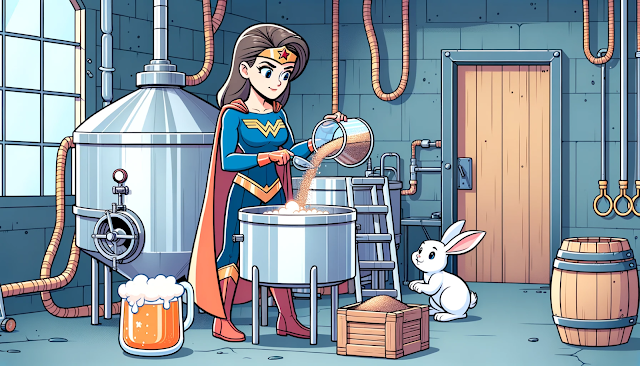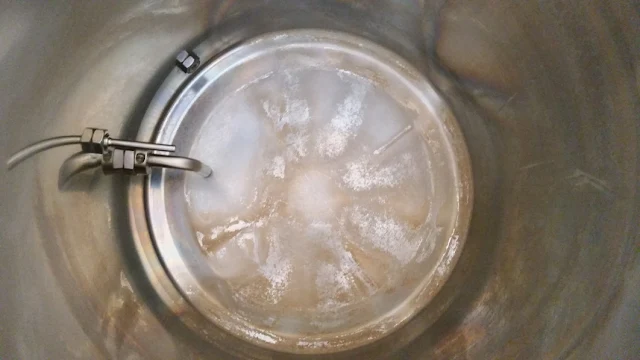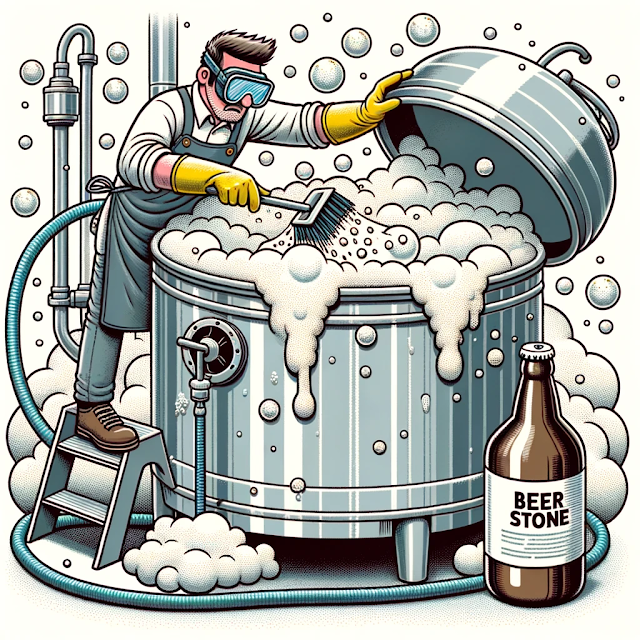In the alchemy of brewing, few elements are as misunderstood or as critically important as oxygen.
It is the Janus-faced god of fermentation: a vital, life-giving force in the opening moments, and a stale, flavor-destroying poison at nearly every other stage. Mastering the art of brewing is, in many ways, the art of mastering oxygen: knowing precisely when to introduce it, and when to fight relentlessly to keep it out.
An amateur brewer makes wort; a master brewer manages oxygen.
This guide is your complete manual to this crucial variable. We will dive deep into the biochemistry of yeast respiration, explore the devastating chemical pathways of oxidation, and provide a comprehensive playbook of techniques, from simple splashing to pure oxygen injection.
For a brief, critical window after you've chilled your wort but before active fermentation begins, oxygen is your yeast's most important nutrient. T
his is the only time your yeast performs aerobic respiration, a process essential for building a strong and healthy army for the battle ahead.
Biochemistry in the Brewhouse: The Lag Phase
When you pitch yeast into cooled wort, it enters the "lag phase." During this period, it is not producing alcohol. Instead, it is focused on reproduction and building up its health. The dissolved oxygen (DO) you introduce is the critical fuel for this phase, as the yeast uses it to synthesize essential compounds for its cell membranes:
- Sterols and Unsaturated Fatty Acids: These are the literal building blocks of strong, flexible, and healthy yeast cell walls. A robust cell membrane allows the yeast to properly manage nutrient transport, expel waste products (like alcohol), and, crucially, to tolerate the increasingly toxic, high-alcohol environment as fermentation progresses. Think of it as giving your soldiers proper armor before sending them into battle.
- Yeast Reproduction: With strong cell walls, the yeast can bud and multiply effectively, often quadrupling its population. Building a large, healthy colony is the key to fermenting the wort quickly and cleanly. Insufficient oxygen leads to a smaller, weaker yeast population that struggles, resulting in slow or "stuck" fermentations and the production of off-flavors like acetaldehyde (green apple) and fusel alcohols (hot, solvent-like).
Brewer's Insight: The High-Gravity Connection
The higher the Original Gravity (and thus the potential ABV) of your beer, the more critical proper aeration becomes. Alcohol is toxic to yeast, and a strong cell membrane is its only defense.
For high-gravity beers like Imperial Stouts or Barleywines, a target of 12-15+ ppm of dissolved oxygen is essential for ensuring the yeast can survive the high-alcohol environment and fully attenuate the beer, preventing a cloyingly sweet final product.
Once fermentation begins and your yeast switches to anaerobic (oxygen-free) respiration, oxygen switches from friend to mortal enemy.
Any introduction of oxygen from this point forward is known as oxidation, a cascade of chemical reactions that will permanently and irreversibly damage your finished beer.
Hot-Side Aeration (HSA): The Cardboard Time-Bomb
This occurs if you splash or agitate your wort while it is still hot (above 80°F or 27°C), such as during the transfer from the kettle to the fermenter before it's fully chilled. At high temperatures, oxygen eagerly binds with lipids and melanoidins in the wort, creating unstable compounds.
Over weeks or months of storage, these compounds break down and create trans-2-nonenal, the specific chemical that produces the unmistakable stale, papery, or "wet cardboard" flavor in beer.
The damage is a time-bomb set on brew day that only goes off in the finished package.
Post-Fermentation Oxidation: The Flavor Thief
Introducing oxygen after fermentation is even more immediately damaging. The protective layer of CO2 created by the yeast is gone, and the delicate flavor and aroma compounds you've spent weeks cultivating are left exposed.
This leads to a rapid staling of the beer, manifesting in several ways:
- Muted Hop Aroma: The first casualty. The volatile compounds from your expensive whirlpool and dry hop additions are fragile and are quickly destroyed by oxygen, leaving your IPA smelling dull and malty.
- Development of Off-Flavors: Oxidation creates sweet, sherry-like, nutty, or honey-like flavors that are inappropriate for most styles. Rich malt flavors turn into a cloying, dull sweetness.
- Visual Changes: Oxygen can cause browning of the beer's color and contribute to permanent haze as polyphenols bind together.
The golden rule is simple: Aerate vigorously when the wort is cold, and avoid it obsessively at all other times.
Low-Tech Aeration Methods ("Good")
These methods aim to saturate your wort with oxygen from the atmosphere, which has a theoretical maximum of about 8 ppm (parts per million) in standard gravity wort.
- Vigorous Shaking: Seal your fermenter and shake it like crazy for 5 minutes. It's effective but physically demanding and less repeatable than other methods.
- Splashing/Cascading: As you transfer your chilled wort from your kettle to your fermenter, let it splash! This is a simple and effective way to incorporate air.
- Whisking: Use a large, sanitized stainless steel whisk to vigorously whip the surface of your cold wort for 5-10 minutes. This creates a vortex and effectively introduces a good amount of oxygen.
High-Tech Aeration Methods ("Better" and "Best")
- Aeration Stone with a Pump ("Better"): Using an aquarium-style pump with a sanitized diffusion stone (0.5-2 micron) can achieve 8-10 ppm. Crucially, you must place a sanitary 0.2 micron inline filter between the pump and the stone. Failure to do so turns your pump into a microbe cannon, injecting airborne contaminants directly into your wort.
- Pure Oxygen Injection ("Best"): This is the most effective and efficient method. Using a small tank of pure oxygen, a regulator, and a diffusion stone, you can fully saturate your wort with 12-15+ ppm of dissolved oxygen in as little as 60-90 seconds. This is the gold standard for high-gravity brewing and ensuring clean, fast fermentations every time.
Pro-Tip: Avoiding Post-Fermentation Oxidation
Once fermentation starts, your new mantra is "no splashing."
Use an auto-siphon for all transfers and keep the end of the tubing below the surface of the liquid you're transferring into.
For ultimate protection, learn to perform closed transfers, using CO2 pressure to move beer from one sanitized, purged vessel (like a carboy) to another (like a keg) without it ever touching the air.
While fermentation will still occur without proactive aeration, understanding and managing oxygen is a hallmark of a skilled brewer.
By providing your yeast with the oxygen it needs during the lag phase, you promote a strong, healthy fermentation that leads to cleaner flavors and better attenuation.
And by diligently protecting your beer from oxygen at all other times, you preserve its delicate aromas and ensure its long-term stability.
Treat oxygen as the powerful tool it is, a friend to your yeast, a foe to your finished beer, and you will unlock a new level of control and consistency in your brewing journey.
















